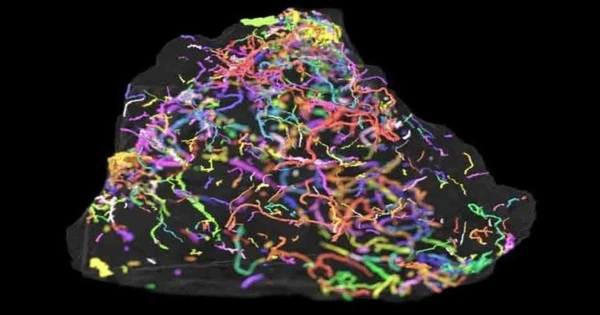Organic molecules known as molecular fossils, also known as biomarkers, provide information about past life and environmental conditions. Over geological time scales, these compounds can be preserved in rocks and sediments, providing insights into the evolution of life on Earth.
Paleontologists are gaining insight into life over a billion years ago through chemical traces in ancient rocks and the genetics of living animals. The study, published in Nature Communications, combines geology and genetics to show how changes in the early Earth influenced how animals ate.
David Gold is an associate professor in the Department of Earth and Planetary Sciences at the University of California, Davis, who studies the evolution of life using tools from geology and biology. It is now possible to recover chemical traces of life from ancient rocks, where animal fossils are scarce, using new technology.
Our interpretation is that these phytosterol molecular fossils record the rise of algae in ancient oceans, and that animals abandoned phytosterol production when they could easily obtain it from this increasingly abundant food source. If we’re right, then the history of the smt gene chronicles a change in animal feeding strategies early in their evolution.
David Gold
Lipids, in particular, have the ability to survive in rocks for hundreds of millions of years. Traces of sterol lipids, which are derived from cell membranes, have been discovered in rocks dating back 1.6 billion years. Most animals today use cholesterol – sterols with 27 carbon atoms (C27) – in their cell membranes. Fungi, on the other hand, typically use C28 sterols, whereas plants and green algae produce C29 sterols. The C28 and C29 sterols are also known as phytosterols.
C27 sterols have been found in rocks 850 million years old, while C28 and C29 traces appear about 200 million years later. This is thought to reflect the increasing diversity of life at this time and the evolution of the first fungi and green algae.
Without actual fossils, it’s hard to say much about the animals or plants these sterols came from. But a genetic analysis by Gold and colleagues is shedding some light.

Don’t make it, eat it
Most animals are not able to make phytosterols themselves, but they can obtain them by eating plants or fungi. Recently, it was discovered that annelids (segmented worms, a group that includes the common earthworm) have a gene called smt, which is required to make longer-chain sterols. By looking at smt genes from different animals, Gold and colleagues created a family tree for smt first within the annelids, then across animal life in general.
They discovered that the gene originated very early in the evolution of the first animals and then underwent rapid changes around the time phytosterols first appeared in the rock record. As a result, most animal lineages lost the smt gene.
“Our interpretation is that these phytosterol molecular fossils record the rise of algae in ancient oceans, and that animals abandoned phytosterol production when they could easily obtain it from this increasingly abundant food source,” Gold said in a statement. “If we’re right, then the history of the smt gene chronicles a change in animal feeding strategies early in their evolution.”
















